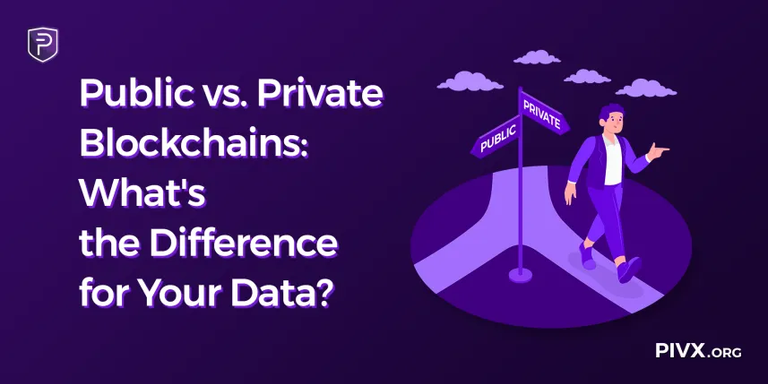
There is a stark contrast between public and private blockchains when it comes to how your data is stored and managed. While public blockchains operate like bustling city squares where anyone can gather, observe, and participate, their private counterparts are akin to exclusive private clubs with strict membership requirements and iron-clad confidentiality agreements. So, what’s the difference between public and private blockchains for your data?
Public Vs. Private Blockchains
Imagine a world where every financial transaction you’ve ever made is published in tomorrow’s newspaper for everyone to see. While this may seem like an extreme scenario, every transaction, smart contract execution, and piece of data is visible to anyone with an internet connection on a “transparent” public blockchain. Bitcoin, for instance, contains a permanent, unalterable record of every transaction since its inception in 2009.
Yes, all 800+ million transactions and counting are freely available for analysis by anyone with the curiosity and tools to examine them. This is not entirely a bad thing, but one major downside is that transactions could be traced back to your real identity.
It is worth mentioning that privacy-centric projects like PIVX, Monero, and others employ several methods like zkSNARKS, Ring Signatures, and Stealth Addresses to obfuscate transactions. Although they are not exactly private blockchains, they introduce the element of anonymity.
On the flip side, access is controlled in private blockchains (aka permissioned blockchains). Participation is limited and the data remains visible only to pre-approved entities. When Walmart uses blockchain technology to track food safety across its supply chain, that data isn’t broadcast to the world. Instead, it remains within Walmart’s controlled network of suppliers, distributors, and regulatory partners.
This fundamental architectural difference creates a cascade of implications that touch every aspect of how your data is handled, from the moment it enters the blockchain to decades into the future when that information might still be relevant.
Your Data on Public Blockchains
Public blockchains create what experts call the “transparency paradox.” This is a situation where complete openness can simultaneously enhance and undermine privacy and security. When you interact with a public blockchain, you’re essentially carving your transaction into digital stone.
Traditional blockchain transactions are transparent, revealing details such as the sender and receiver’s addresses, and the amount sent. Every Bitcoin transaction ever made remains accessible today, and barring a catastrophic failure of the entire network, these records will likely outlast many traditional institutions. This permanence creates unprecedented transparency and raises profound questions about the right to data privacy over extended time periods.
To put things in perspective, a cryptocurrency transaction you make today could be analysed by sophisticated algorithms decades from now, potentially revealing patterns and associations that aren’t apparent with current technology. Advanced blockchain analysis firms like Chainalysis and Elliptic have already demonstrated the ability to trace transactions through complex mixing services and identify wallet owners through various correlation techniques.
Your name may not be directly attached to transactions but the digital breadcrumbs you leave can lead back to your identity. Every exchange account you’ve verified, every merchant purchase you’ve made, and every peer-to-peer transaction with someone who knows your identity creates potential links between your blockchain addresses and your real-world persona.
Your Data on Private Blockchains
Private blockchains represent a fundamentally different approach to data handling, prioritizing control and confidentiality over transparency and decentralization. They implement sophisticated access control mechanisms that can restrict who can view data and the specific data different parties can access. In a supply chain blockchain, for example, suppliers might see only the information relevant to their portion of the process, while auditors gain broader access for compliance purposes, and executives receive high-level analytics without exposing sensitive operational details.
This granular control extends to data lifecycle management. Private blockchain operators can implement policies for data retention, archiving, and even deletion. Organizations can also design data governance frameworks that comply with regulations like GDPR while still benefiting from blockchain’s immutability and transparency within controlled parameters.
Private blockchains offer significant advantages for organizations operating under strict regulatory requirements. Financial institutions, healthcare providers, and government agencies can leverage blockchain technology while maintaining compliance with data protection regulations that would be impossible to satisfy on public networks.
The Security Spectrum
The security implications of blockchain architecture extend far beyond simple access control, encompassing everything from cryptographic assumptions to attack vectors and recovery mechanisms.
Decentralization vs. Control Trade-offs
Public blockchains derive their security from radical decentralization, i.e. assumption that no single entity or small group of entities can control enough of the network to compromise its integrity. This model provides exceptional resistance to censorship and single points of failure. It also means that if something goes wrong, there’s often no recourse.
Private blockchains trade some of this decentralized security for organizational control and accountability. While this creates potential single points of failure, it also enables rapid response to security threats, the ability to freeze or reverse transactions in emergency situations, and clear legal frameworks for addressing disputes or breaches.
Cryptographic Key Management
In public blockchains, users must take complete responsibility for protecting their private keys; lose your keys, and your assets are gone forever. The immutable nature of public blockchains means there’s no customer service department to call if you forget your password.
Private blockchains can implement more traditional key management and recovery systems, including multi-signature schemes with organizational oversight, key escrow services, and recovery mechanisms that balance security with usability. This flexibility can be crucial for enterprise applications where complete key loss would be catastrophic.
 | PIVX: Your Rights. Your Privacy. Your Choice |